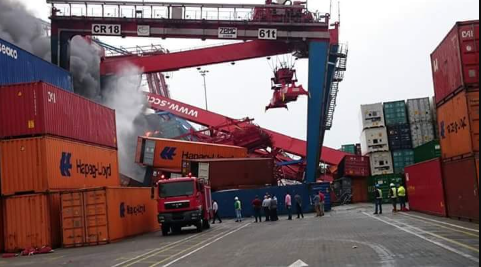Some major damage is being reported after a 368-meter long containership owned by APL struck a ship-to-shore crane at Egypt’s Port Said earlier this week, leaving the crane on the verge of collapse potentially.
An APL spokesperson told reporters that the incident occurred on Oct. 27 at 1642 local time when the APL Temasek came into contact with a gantry crane and a navy barge while berthing at the Suez Canal Container Terminal (SCCT) at Port Said in Egypt.
There have been no reports of injuries or pollution, but local reports have said that damages could reach well into the millions of dollars.
“APL is presently cooperating with the relevant authorities and stakeholders in damage assessment and in investigating the incident,” the statement from APL added.
A schedule update from NYK Line released Oct. 30th said that as of Friday the APL Temasek was not permitted to move due to the risk of the crane collapsing, and that impacts for arrivals into European ports were unknown at time of update.
“There is some speculation that the vessel may be able to commence discharging work on Nov 1st local time,” the statement said.
Local reports have said that the authorities are awaiting the arrival of crane specialists to assess the damage and provide the best course of action going forward.
The Singapore-flagged APL Temasek was delivered in 2012 and was to be the first in a series of ten 14,000 TEU containerships for APL. The series currently consists of six vessels, according to APL’s website, and the six remain the largest and most advanced vessels in the company’s fleet.
APL Temasek is deployed on the Asia-Europe Loop 4 service with calls at Ningbo, Shanghai, Yantian, Singapore, Port Said, Le Havre, Southampton, Hamburg and Rotterdam.
APL is a unit of Singapore-based Neptune Orient Lines.
APM Terminals, part of Maersk Group, is the largest stakeholder of SCCT holding 55 percent.
